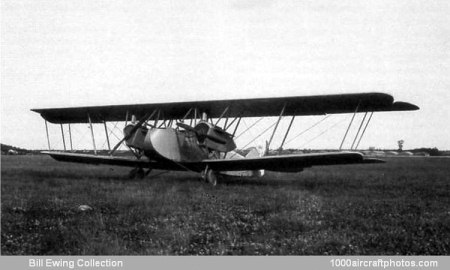Adolphe Bernard's first original design was the twin-engined two-seat A.B.1 Bn intended for the night bomber role. The three-bay biplane was of wooden construction, the fabric covered wings were not staggered, while the lower wings had considerable dihedral. The outer and mid interplane struts were outward leaning pairs but the inner bay was defined by a complex of struts supporting the 180 hp Hispano-Suiza 8Ab eight-cylinder liquid-cooled in-line V-engines mid-way between the wings. It had ailerons on both upper and lower wings, externally connected.
The flat sided plywood covered fuselage had a blunt nose which held the gunner's position fitted with a 0.303 in (7.7 mm) machine gun on a flexible mount, while the A.B.1 Bn could carry a bomb load of up to 1,323 lb (600 kg). The fixed main landing gear had a wide track, with twin wheels on short axles mounted below each engine on inverted V-struts, themselves further braced to the lower fuselage longerons.
The prototype was tested in late spring 1918, but no production order was received before the Armistice, testing continued into early 1919, and while transport versions were proposed, no further aircraft were produced.
